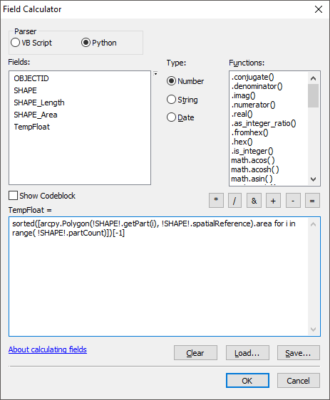Field Calculator is one of the most frequently used tools within ArcMap: taught as part of nearly every introductory GIS course, it offers spreadsheet-like features to the normally static attribute table. Starting in ArcGIS 10.0, the attribute table also exposes the raw Geometry object of each feature to Field Calculator. This underutilized feature allows for rapid access to data that normally requires running a separate geoprocessing tool and joining the result to the attribute table. Building on my previous post about geodesic areas, I’ve compiled some of the more useful one-line geometry field calculations.

Continue reading Geometry Operations with ArcMap Field Calculator
